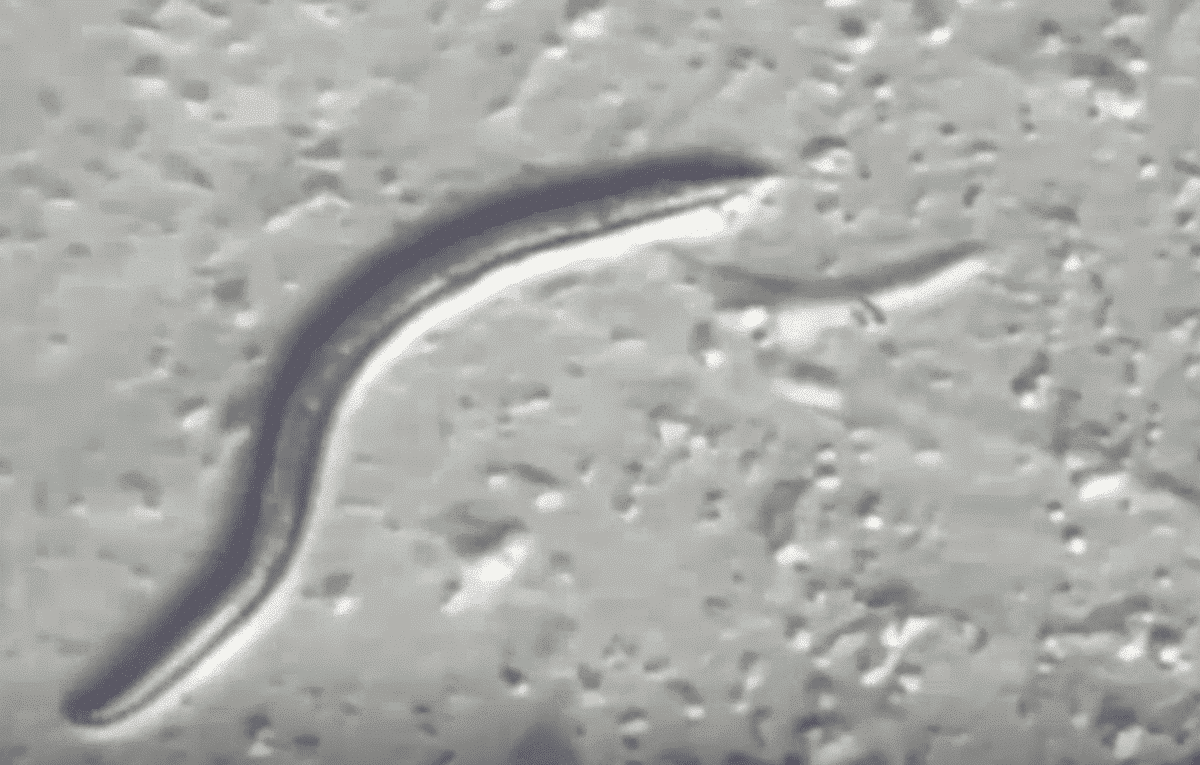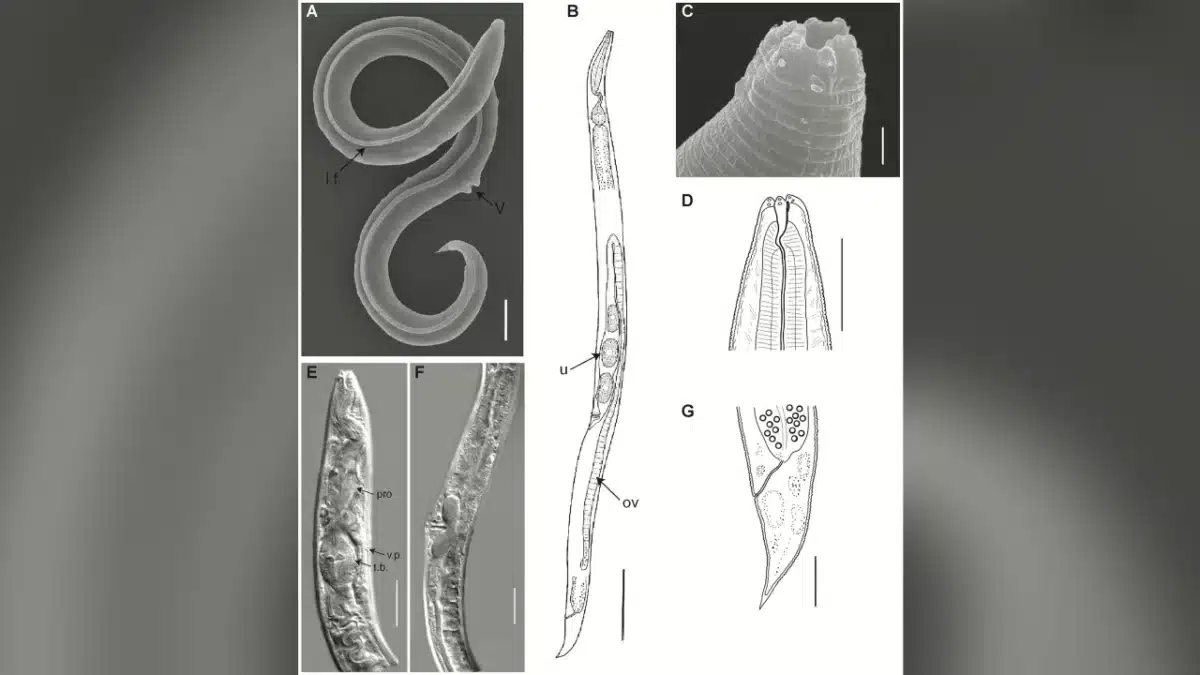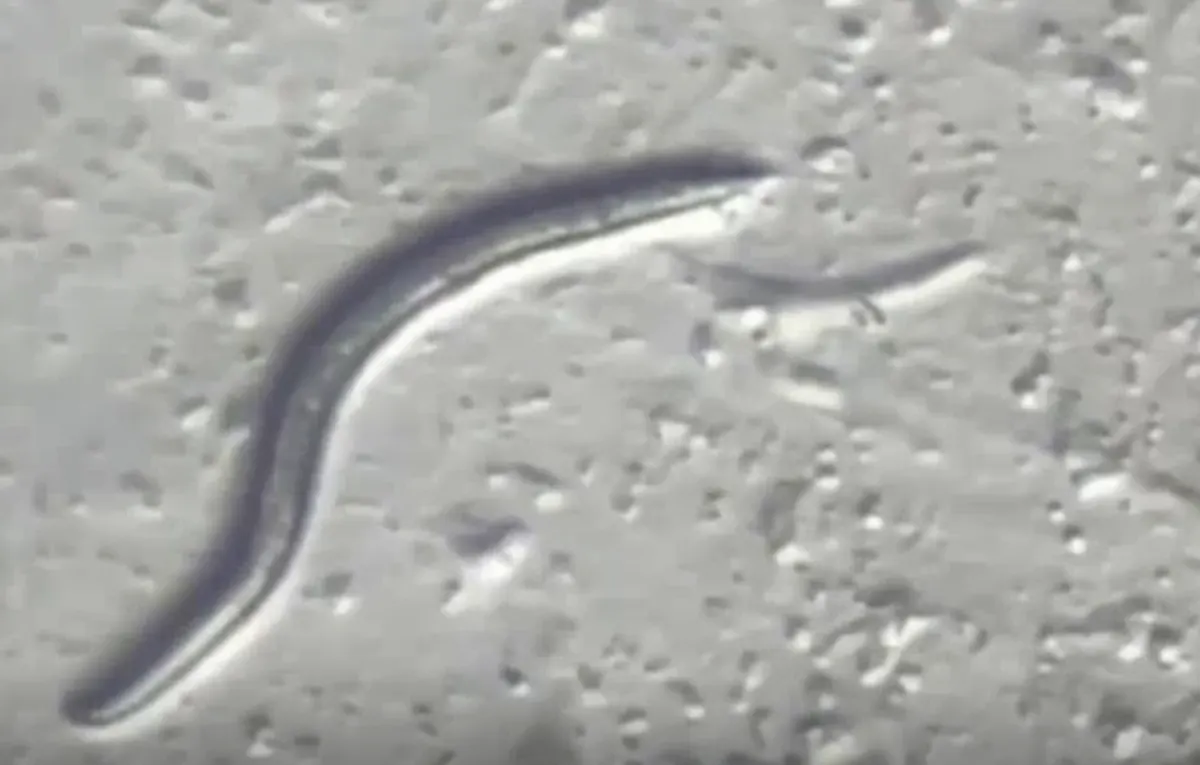A worm was astonishingly revived after spending 46,000 years in the Siberian permafrost.

Imagine a creature frozen in time, lying dormant beneath the icy surface for an astonishing 46,000 years. That’s not a scene from a science fiction movie. It’s a real-life scientific discovery that has left researchers and enthusiasts alike in awe.
Scientists found the completely untouched worm in the Siberian permafrost, before successfully reviving it. The worm is a relic from a time when woolly mammoths and sabre-toothed tigers roamed the Earth.
The age of this worm is not just a number; it’s a testament to the incredible resilience of life and a window into our planet’s distant past. Join us as we delve into this fascinating discovery, the revival of the worm, and what it means for our understanding of life itself!
Key Points
- Researchers found a 46,000-year-old worm in Siberian permafrost and successfully revived it.
- The worm’s dormant state, cryptobiosis, allowed survival in extreme conditions.
- Radiocarbon dating accurately determined the worm’s impressive age.
- The discovery offers insights into conservation biology and cryopreservation.
- The worm’s revival symbolizes life’s resilience and opens new avenues for scientific exploration.
Worm Revived After 46,000 Years: The Finding

In an extraordinary scientific expedition, researchers unearthed an revived a species of worm from the Siberian permafrost. The roundworm, identified as a previously unknown species, was found 130 feet below the surface, frozen in time for over 46,000 years.
The finding was made by scientists from the Institute of Physicochemical and Biological Problems in Soil Science in Russia. Among the team was researcher Anastasia Shatilovich, who played a crucial role in the revival of the worms. The team found two roundworm species in the Siberian permafrost, and Shatilovich successfully revived two of the worms by simply rehydrating them with water.
Shatilovich took around 100 of these ancient worms to labs in Germany for further analysis. The transportation method was far from what one might expect for such delicate and valuable samples. Instead of using specialized containers or controlled environments, Shatilovich carried the worms in her pocket.
The Revival: What is Cryptobiosis?
Cryptobiosis is an extraordinary biological phenomenon. During cryptobiosis an organism’s metabolic activities come to a halt.They can then survive freezing temperatures, lack of water, or high salinity. In this state, the organism remains in a condition “between death and life.” Its metabolic rates decreases to an almost undetectable level.
The revival of the worm has provided valuable insights into the process of cryptobiosis. It may also open doors to understanding how life can be halted and then restarted. This finding has implications not only for biology but also for conservation efforts and the protection of species in extreme conditions.
How They Calculated Its Age: What is Carbon Dating?
Radiocarbon dating allowed scientists to accurately determine its age. This is a method that measures the amount of carbon-14 in a sample to calculate its age. By analyzing the plant material in the sample, scientists were able to establish that the deposits had not been thawed since between 45,839 and 47,769 years ago.
In the case of the Siberian worm, radiocarbon dating allowed scientists to accurately determine its age. The worm had remained in a dormant state since the late Pleistocene (46,000 years.)
This impressive age of 46,000 years make it the oldest case of a dormant nematode ever discovered.
What Other Animals Roamed the Earth 46,000 years ago?
#1 Woolly Mammoth

The Woolly Mammoth was a prehistoric elephant that lived during the Pleistocene epoch. They had thick, shaggy hair, allowing them to withstand the cold environments of the Ice Age. It had long, curved tusks and a hump of fat on its back to store energy and help it survive in harsh conditions.
A combination of climate change and overhunting by early humans is most likely what caused its extinction.
#2 Sabre-Toothed Tiger
The Sabre-Toothed Tiger, or Smilodon, was one of the most iconic predators of the Ice Age. Known for its long, dagger-like canine teeth, it was a fearsome carnivore that hunted large herbivores.
Despite its name, the Sabre-Toothed Tiger was not a tiger but a species of prehistoric cat. Its powerful build allowed it to take down large prey. However, its specialized teeth made it vulnerable to changes in its environment, leading to its extinction.
#3 Giant Ground Sloth

The Giant Ground Sloth, or Megatherium, was a massive herbivore that roamed South America. Unlike modern sloths, which live in trees, the Giant Ground Sloth was a terrestrial animal that could stand on its hind legs to reach tall vegetation.
It had large claws, likely used for digging and defense, and a thick hide to protect against predators. The Giant Ground Sloth’s size and slow movement made it an easy target for human hunters, contributing to its extinction.
#4 Giant Elk
The Giant Elk, also known as the Irish Elk, was one of the largest deer to have ever lived. Standing over 6.5 feet tall at the shoulder and possessing antlers that spanned up to 12 feet, it was an impressive sight.
This huge ungulate roamed Europe and Asia, grazing on grasses and shrubs. Its enormous antlers were likely used in mating displays and territorial disputes. The exact reasons for the Giant Elk’s extinction remain uncertain. It’s possible that changes in habitat and overhunting may have played a role.
These four animals represent a glimpse into a time when the Earth was home to creatures of immense size and unique adaptations. Their existence 46,000 years ago paints a vivid picture of a world both familiar and wildly different from the one we know today.
What the Revival of This Worm Means For the Scientific Community

The finding of the 46,000-year-old worm in the Siberian permafrost is a monumental discovery for the scientific community.
It provides a rare glimpse into the ancient world and offers valuable insights into the phenomenon of cryptobiosis, where organisms can halt their metabolism and survive in extreme conditions.
The worm’s revival after such an extended period opens new avenues for understanding how life can endure in the harshest environments. This discovery may have broader implications for fields such as conservation biology, where learning how organisms adapt to extreme conditions could inform efforts to protect species in today’s changing climate.
Overall, the revival of this ancient worm is a testament to life’s resilience and a promising frontier for scientific exploration and innovation.
46,000-year-old Worm Revived: Conclusion
The discovery of a 46,000-year-old worm in the Siberian permafrost is more than a scientific curiosity. It’s a profound revelation about the tenacity and adaptability of life.
This ancient worm, lying dormant for thousands and thousand of years, connects us to a time when giant creatures roamed the Earth. its revival offers groundbreaking insights into the mysteries of cryptobiosis.
As we reflect on this remarkable finding, we are reminded of the endless possibilities that await us in the uncharted territories of our world. The revival of this ancient worm is not just a chapter in the annals of science; it’s a symbol of life’s enduring wonder and a beacon guiding us to further exploration and understanding.
Thank you for reading this article about the 46,000-year-old worm that was revived! Continue your exploration of the natural world with us:
- Elephant Stops Truck To Steal Its Fave Snack: Sugarcane
- Mom and Son Dead Following First Polar Bear Attack In 30 Years
- Bear Sightings in Yosemite: When, Where, and How
Join our Forum for free today!



